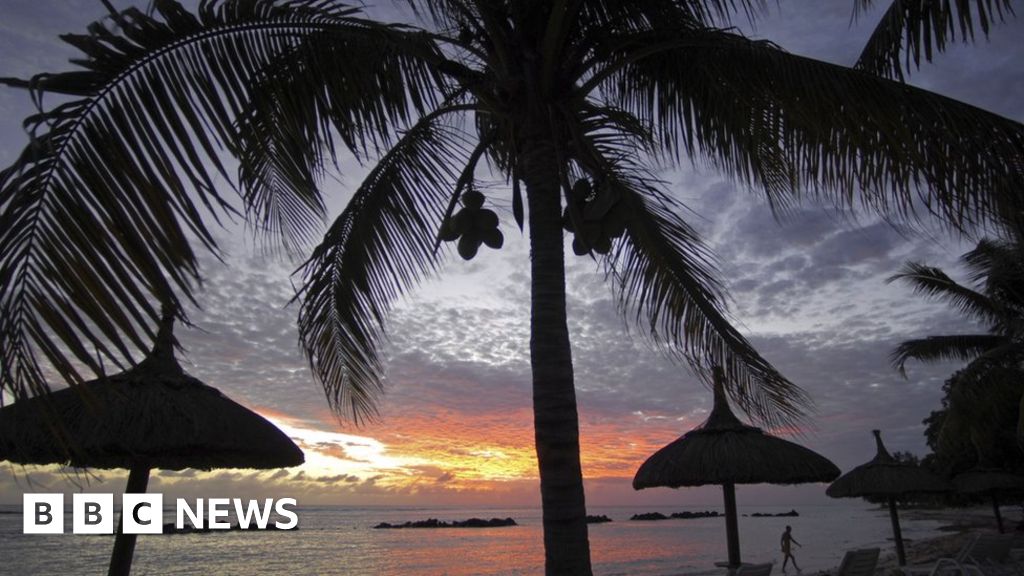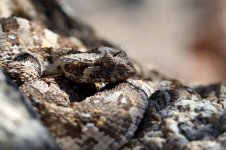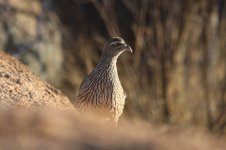4-6 December 2020. Erongo Mountain/Omaruru
250 km inland, daytime temperatures 38-40 C, a landscape of acacia bush, boulder massives and riverine forest along the dry Omaruru River. Reputed to offer some of the best bushland birding in Namibia, little did I know it would also be excellent for mammals.
Day One.
Arrived in the area late evening, a quick recce of the area seeing me stumbling through acacia thorns and up a koppe to a glorious setting sun ...one Pearl-spotted Owlet glaring at me, two Dassie Rats taking in the evening sun, one Red-crested Korhaan peering out from under an acacia, a range of passerines including Short-toed Rock Thrush, Kalahari Scrub-Robin and Crimson-breasted Shrike.
Day Two.
Pre-dawn, a surprisingly chilly 10 C, positioned myself in the semi-dark beneath rising domes at the flanks of the Erongo Mountain. Target here was Hartlaub's Francolin, just about the only bird in Namibia that I hadn't seen on previous trips. Living among the tumbling boulders and rocks, it is supposed to be a difficult bird to find, the best chance being to locate a calling bird as the sun rises. So there I was, Red-billed Francolins making a racket, Kalahari Scrub-Robins and White-browed Scrub-Robins active in the scrub, but strain my ears to their absolute limit, two brief distant calls were the best I could do for Hartlaub's Francolin. Not even sure which direction the calls came from, the rising sun put paid to further voice, so decided to call it quits on them and drive a few kilometres further for a day of birding along the Omaruru River.
Entered the gates of the Erongo Mountain Preserve, a warning sign depicting Black Rhino and another with Lion, a few kilometres further five Hartman's Mountain Zebras trotted through the bush, a Damara Dik-dik tenderly picked its way through withered grass. Ten kilometres beyond the gate, the dusty road crosses a branch of the Omaruru River, offering access to the slither of greenery that lines the otherwise dustbowl riverbed. Parked here and set out on foot, still only 9.00 am but already heading for 30 C. Stunning birding - within minutes, gaudy Crimson-breasted Bush-Shrikes, flocks of the totally charismatic White-tailed Shrikes, bright yellow eyes to a smart black and white dress, pods of Violet Wood-Hoopoes, five of the hoped-for Ruppell's Parrots. Also Black Cuckoo, Carp's Tit, Ashy Tit, Brubru Shrike and a range of commoner birds such as Southern Grey-headed Sparrows and Grey-backed Camaropteras. Aside the Omaruru River, Rosy-faced Lovebirds hurtling over, Monteiro's and Damara Red-billed Hornbills and, in staggering numbers, mammal footprints of assorted sizes and forms! Antelopes of various species and distinctive pads of Giraffes clear to see, then the track of a lumbering Black Rhino, the two side toes to a large central pad leaving no doubts. Then some prints to momentarily stop me … two sets of cat tracks, large cat tracks, very fresh! My thoughts immediately swung back to that warning sign of Lions, though these were too small, I think they were Leopards, a larger mama with adolescent. Followed the tracks a while, it seemed a regular route with older tracks also clearly visible. With numerous more Rhino tracks, it certainly added an edge for the day's birding, one eye in the massive fig trees for a lounging Leopard, another for a dozing hulk of a Rhino in the thick acacia bush. In the event, saw neither, but plenty of other mammals - several Kudu, a number of Black-faced Impala, some Steenbok, a couple of Gemsbok, a few Springbok, one Yellow Mongoose. Better still, a few kilometres later, I inadvertently flushed a Verreaux's Eagle Owl, the massive bird flying across the riverbed and appearing to land in a large tree opposite, immediately setting off alarm calls from local Cape Glossy Starlings and Southern Pied Babblers. Crossed to have a look and lucky I did ...the Verreaux's Eagle Owl was a fledgling and it had misjudged its landing, it was now tangled in an acacia shrub looking none too amused! Ascertaining it really didn't seem capable of extracting itself and keeping a wary eye open for a mother owl - didn't fancy the talons of a two-metre wingspan owl hitting me in the back of the head - I decided upon a rescue. One big fluffy ball of owl thereafter placed on a bough of an adjacent tree to recover its dignity. Crossing back to the opposite side the river, continued the owl theme with a roosting African Scops Owl, very nice indeed. Later on, found another two Verreaux's Eagle Owls and another African Scops Owl, so pretty good day for owls.
In the midday heat, popped back to base for an hour aside the pool, Violet Wood-Hoopoes and Citrus Swallowtail flopping over, Alpine Swift and Greater Striped Swallow high above. And then, relaxation over, it was back to the bush for a few more hours if excellent birding. Hyper fresh Rhino poo in abundance, more cat tracks, nice scattering of birds such as Golden-tailed Woodpecker and Common Scimitarbill. As sunset finally approached, Black-faced Impala, Steenbok and Damara Dik-dik emerged from cover, a couple of Red-crested Korhaans strutted their stuff. Night drive failed to produce any additional mammal species, but one Freckled Nightjar on the track was a nice conclusion to the day.
Day Three.
Another predawn vigil in the Erongo Mountains, hoping an elusive Hartlaub's Francolin would reveal its locality by call. No calls at all this morning, so as the sun began its rise, I decided to explore the rocky terrain and hopefully stumble across the desired birds. Plenty of birds as I climbed, parties of White-tailed Shrikes, Monteiro's Hornbills and Pale-winged Starlings prominent. As the sun warmed, Namibian Agama Lizards crawled atop boulders, bobbing bright orange heads, other smaller lizards skittling off at my approach. And then success, one hour into my scramble, as I climbed a particularly impressive boulder outcrop, a rush of wings and blur of movement, up flew a male Hartlaub's Francolin, cruising directly across to an adjacent boulder. Four more Hartlaub's Francolin on its immediate trail, these picking their way through arid scrub between boulders and onto the same boulder. There we had it, two males and three females, all in nice view. Clearly slightly curious, one of the males and, to a lesser degree, one female then picked their way back to my boulder and crept up its rear. Atop my rock, it then started calling, eyeball to eyeball with Hartlaub's Francolin, not bad.
Heat already beginning to build, gave up on finding a Rockrunner and instead returned to the car, thereafter taking a 30 km loop through very dry arid lands east of Omaruru. Among the many birds, plenty of Yellow-billed Hornbills, eight Ostriches, one Black Stork, one Brown Snake Eagle, one Red-crested Korhaan, several Acacia Pied Barbets and a couple of Swallow-tailed Bee-eaters. Also added a bit of butterfly flavour along a dry river bed, Common Orange-Tips, Brown-veined Whites, several Velvet-spotted Blues and a couple of African Migrants. And so a nice day rumbled on, a rare patch of water in an otherwise dry river adding Three-banded Plovers, Kittlitz's Plovers and Blacksmith Plovers, as well as Ruffs, Wood Sandpipers and Little Stints, then acacia woodland providing more variety with six stately Giraffe and the odd Damara Dik-dik here and there.
Afternoon relaxation by the pool again, a singing Hoopoe a lazy backdrop, then back out for another walk along the Omaruru River in the Erongo Mountains. Excellent mammal selection - more mega fresh droppings of Black Rhino, loads of footprints too, also a Kudu, one more Giraffe, a herd of Black-faced Impala, several Gemsbok, a couple of Steenbok and three or four Damara Dik-diks. Good stuff!
Returned to base just before sunset.











